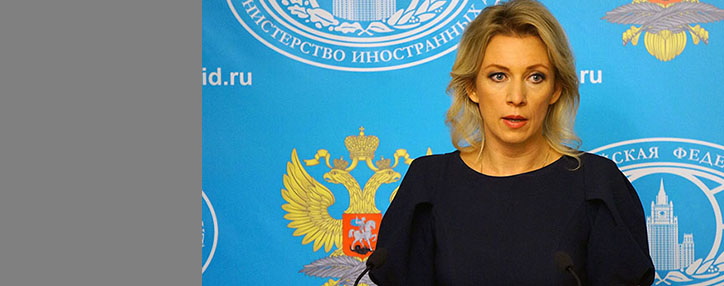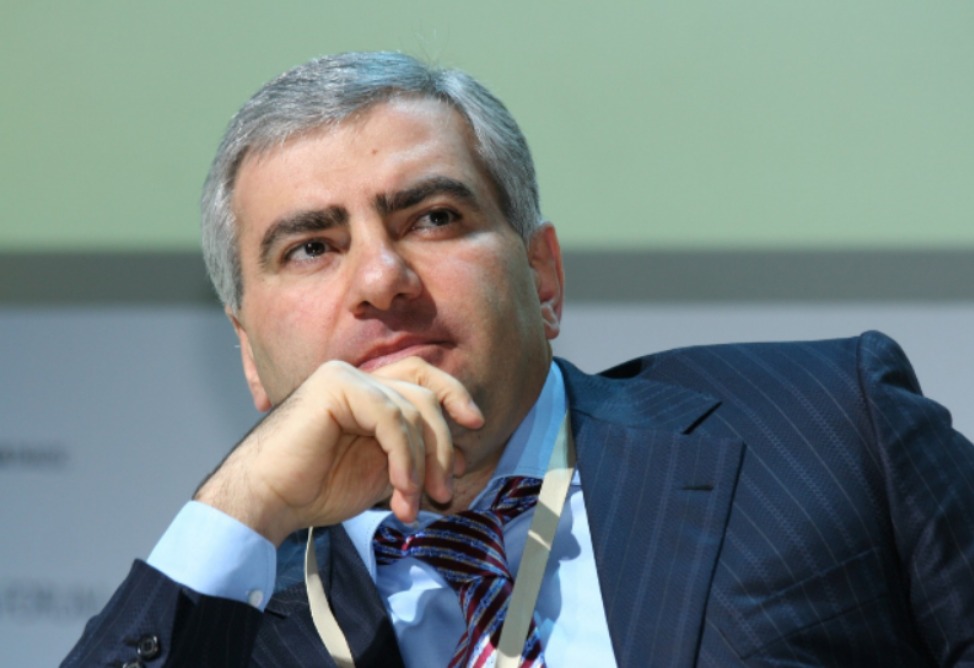Moscow welcomes positive trends in Karabakh conflict settlement process
04.10.2018,
17:57
Russia welcomes the positive trends that have emerged in the efforts to resolve the Nagorno-Karabakh conflict, a spokeswoman for the Russian Foreign Ministry, Maria Zakharova, said at a press briefing today.

YEREVAN, October 4. /ARKA/. Russia welcomes the positive trends that have emerged in the efforts to resolve the Nagorno-Karabakh conflict, a spokeswoman for the Russian Foreign Ministry, Maria Zakharova, said at a press briefing today.
Armenian Prime Minister Nikol Pashinyan said after attending a CIS summit in Tajikistan on September 28 that he had a brief meeting with Azerbaijani President Ilham Aliyev and that they agreed to instruct their ministers of defense to reduce tensions along the border and also reaffirmed their commitment to the negotiated settlement of conflict and also agreed to create operative communication line between the parties to be able to find out who violated the cease-fire regime.
“We welcome all the positive trends that have emerged around the settlement. It is important now to progress them and not to injure with careless rhetoric, which, unfortunately, has also been taking place lately. For its part, Moscow will provide all the necessary assistance to these positive trends,” said Zakharova.
The Nagorno-Karabakh conflict erupted into armed clashes after the collapse of the Soviet Union in the early 1990s as the predominantly Armenian-populated enclave of Azerbaijan sought to secede from Azerbaijan and declared its independence backed by a successful referendum.
On May 12, 1994, the Bishkek cease-fire agreement put an end to the military operations. A truce was brokered by Russia in 1994, although no permanent peace agreement has been signed. Since then, Nagorno-Karabakh and several adjacent regions have been under the control of Armenian forces of Karabakh.
Nagorno-Karabakh is the longest-running post-Soviet era conflict and has continued to simmer despite the relative peace of the past two decades, with snipers causing tens of deaths a year. On April 2, 2016, Azerbaijan launched military assaults along the entire perimeter of its contact line with Nagorno-Karabakh. Four days later a cease-fire was reached. -0-
Armenian Prime Minister Nikol Pashinyan said after attending a CIS summit in Tajikistan on September 28 that he had a brief meeting with Azerbaijani President Ilham Aliyev and that they agreed to instruct their ministers of defense to reduce tensions along the border and also reaffirmed their commitment to the negotiated settlement of conflict and also agreed to create operative communication line between the parties to be able to find out who violated the cease-fire regime.
“We welcome all the positive trends that have emerged around the settlement. It is important now to progress them and not to injure with careless rhetoric, which, unfortunately, has also been taking place lately. For its part, Moscow will provide all the necessary assistance to these positive trends,” said Zakharova.
The Nagorno-Karabakh conflict erupted into armed clashes after the collapse of the Soviet Union in the early 1990s as the predominantly Armenian-populated enclave of Azerbaijan sought to secede from Azerbaijan and declared its independence backed by a successful referendum.
On May 12, 1994, the Bishkek cease-fire agreement put an end to the military operations. A truce was brokered by Russia in 1994, although no permanent peace agreement has been signed. Since then, Nagorno-Karabakh and several adjacent regions have been under the control of Armenian forces of Karabakh.
Nagorno-Karabakh is the longest-running post-Soviet era conflict and has continued to simmer despite the relative peace of the past two decades, with snipers causing tens of deaths a year. On April 2, 2016, Azerbaijan launched military assaults along the entire perimeter of its contact line with Nagorno-Karabakh. Four days later a cease-fire was reached. -0-



